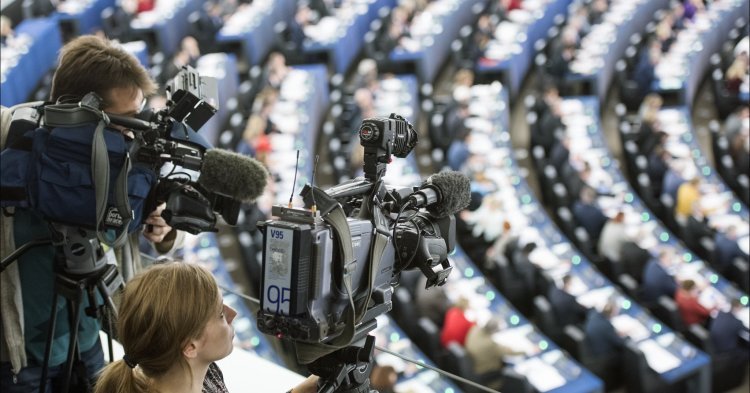A paper released in 2015 by Silke Adam, from the University of Bern, defines public sphere as the link between politicians and citizens, which can be strengthened by the media. The author acknowledges that the national public opinion is more Europeanised nowadays, but this statement is mostly valid for elites. Moreover, the level of this process is not uniform among EU members, because it is influenced by both internal and external factors, such as different types of media, EU institutional design and specific events.
According to a study conducted by researchers Michael Brüggeman and Hagen Schulz-Forberg in 2009, the audience of transnational media in Europe is small, but influential. The question is whether and how they could help to cover the distance between EU institutions and EU citizens and to create a European public sphere that goes beyond national borders and that consists in a network of forums. A European public sphere in fact can have two dimensions: on one hand, the Europeanisation of national media; on the other hand, the establishment of transnational media. Regarding the situation of the first dimension, national media has over the years paid more attention to EU institutions.
When it comes to the second dimension, Brüggeman and Schulz-Forberg listed pan-regional media as the type of transnational media that could contribute the most to a European public sphere. One of the given examples in the study is Euronews, considered the most ambitious broadcasting project among them. Euronews has had an increasing audience and nowadays, according to the Euronews website, it broadcasts in thirteen different languages, 24 hours a day, 7 days a week, reaching 400 million households in 155 countries. In the past it was heavily subsidised by the European Commission, while nowadays it belongs to at least 22 shareholders, among which are the public broadcasters of a number of EU Member States, but also countries such as Russia and Algeria. Other examples of media outlets focusing on the EU are Politico, EurActiv.com, and EU Trade Insights
Websites based on discussions on European issues, like Café Babel and EurActiv.com are praised by Brüggeman and Schulz-Forberg, but they are at the same time not considered very well-known among mass audiences. The ability to reach out to the broader European public is still modest and language still seems to be a huge limitation, as the audience largely prefers to receive news in their native language. Therefore Brüggeman and Schulz-Forberg doubted the existence of a European public sphere.
Another potential resource to create a European public sphere is social media. In 2015, researchers Jacob Groshek and Ahmed Al-Rawi published an analysis on the online protests against austerity measures during the European economic crisis. The starting point of their research was that, since the movements were transnational, a European public sphere came to life in those days. They focused on Twitter using the keywords “austerity”, “euro” and “crisis” from the last two months of 2012. Their findings did not show a very densely interconnected flow of information, however they concluded that the use of these emerging media contexts is important for the sustainability of protest in transnational social movements.
Another way to look at the problem is to take a step back from mere media tools and to focus on the political situation. In his 2011 essay ‘Why Europe Needs a Constitution’ Jürgen Habermas writes that the lack of transparency and civic participation in decision-making – the so-called ‘democratic deficit’ of the European institutions is a cause of distrust among the public. While the Eurosceptics often maintain that a European people does not exist yet, Habermas acknowledged that, historically, in the formation of the present nations, mass communication was a key element in the creation of national consciousness. He showed belief in the concept of the civic nation, which is the decision to create a sense of solidarity among strangers, and underlined the importance of political inclusion in order to win the currently hesitant or reluctant part of the population to the European project.
In conclusion, nowadays challenges related to immigration and globalisation call for a common European solution, but a wide European public sphere can be built only by creating an identity beyond borders. It would contribute to solving problems of democratic deficit, because it would represent a network that gives the citizens of all the Member States the opportunity to be a part of the political process. So far, some media outlets are contributing to this result, but overall, the audience is still nationally bounded. Much more work needs to be done, both in terms of transparency in democratic political processes in the European institutions, and the media.
References
Adam, S. (2015). European public sphere. In Mazzoleni et al (eds) International Encyclopedia of Political Communication. New York: Wiley.
Brüggemann, M. and H. Schulz-Forberg (2009). Becoming Pan-European? Transnational Media and the European Public Sphere. The International Communication Gazette 71(8): 693-712.
Groshek, J. & Al-Rawi, A. (2015). Anti-austerity in the euro crisis: modeling protest with online mobile media usage, users and content. International Journal of Communication 9(2015), 3280–3303.
Habermas, J. (2001). Why Europe Needs a Constitution. New Left Review 11


Follow the comments: |
|
